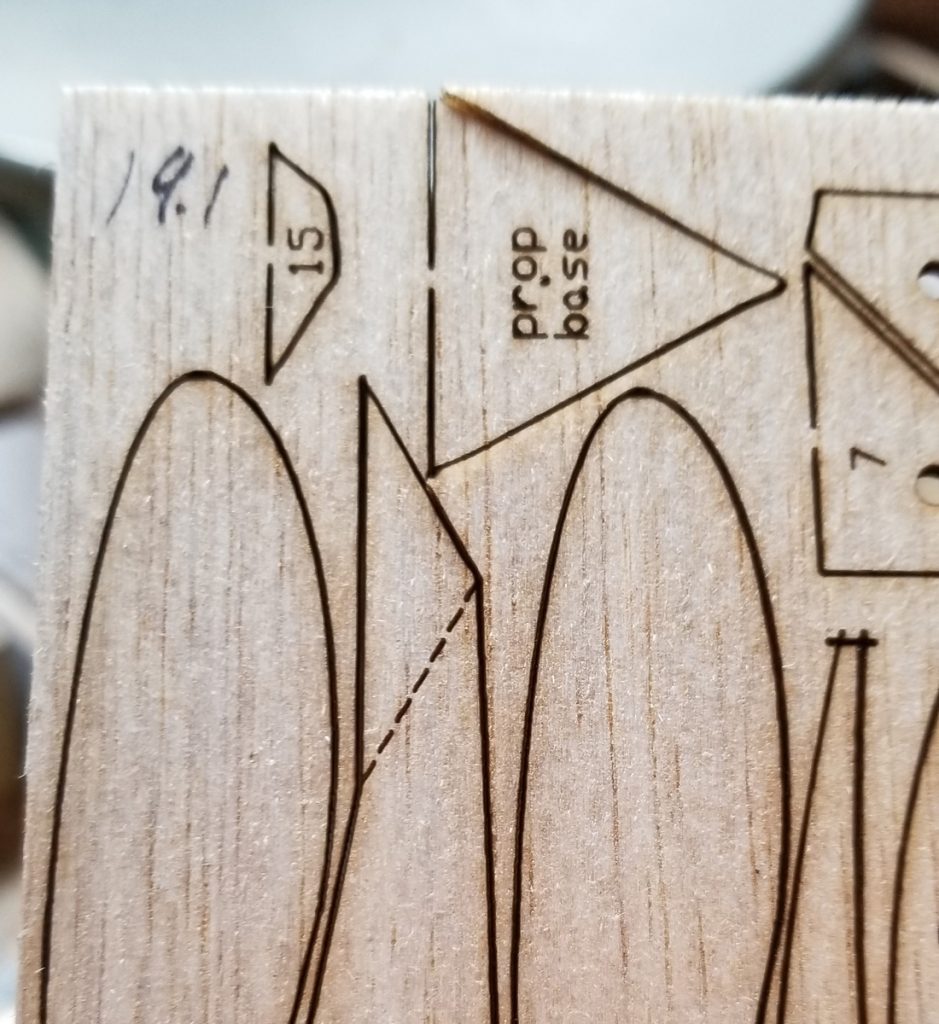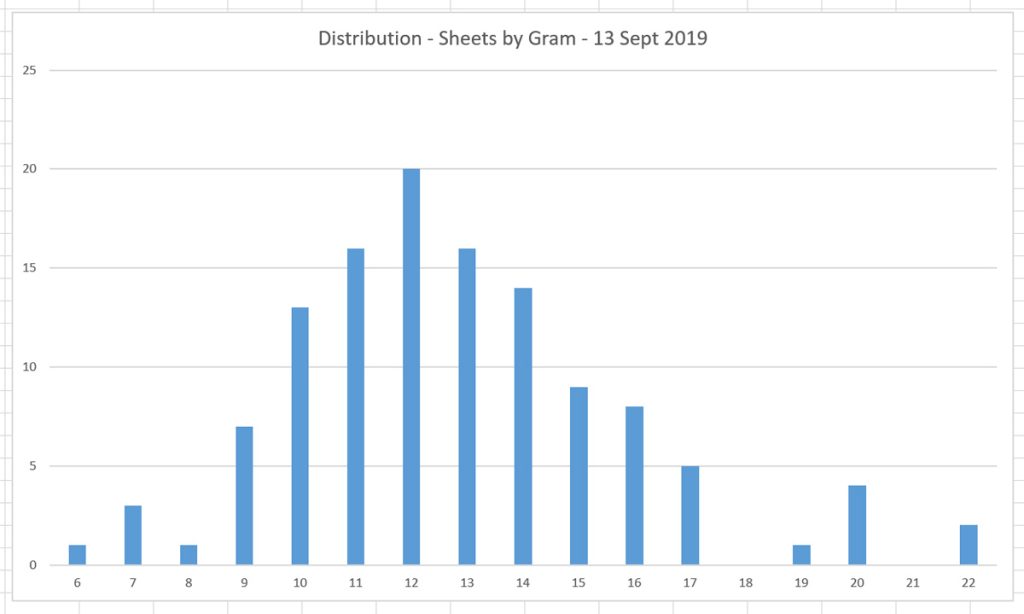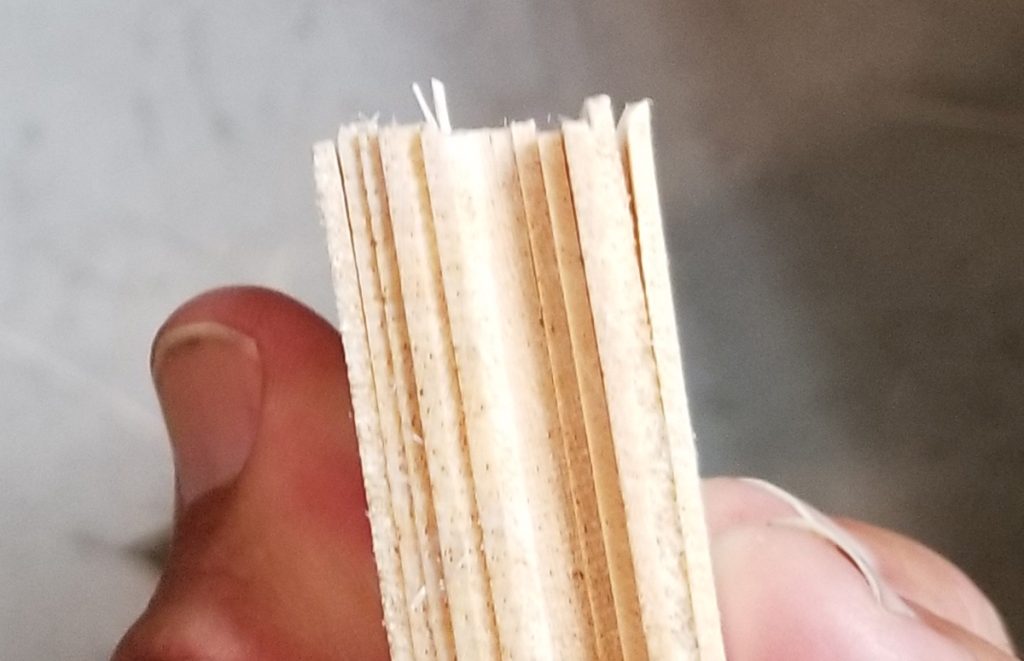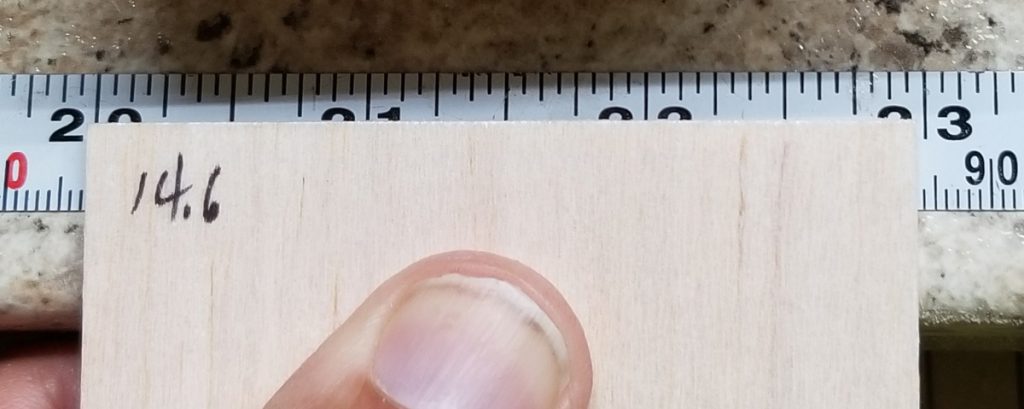Before I left on vacation, I ordered some 1/16″ balsa sheets for laser cutting as I was nearly out. As planned they arrived when I was away. Today, I had to open the box and weigh the sheets. I weigh them so that I can better control my laser cutting – I mean, provide you with the best product I can.
Since the beginning of the year, I have been buying from National Balsa because Sig had a fire in their balsa cutting room and they are not yet back in full operation. Sig always had pretty good balsa, so I was happy – and besides, I get no discount from National, so it costs me nearly twice as much as Sig.
This particular batch may be the lightest overall batch I have ever received. I ordered 100 sheets of 1/16″x3″x36″ and 20 sheets of the same size but from their “Aero Light Bargain Grade” – just to collect light wood (I don’t know why – I have more than I could ever use). National just lumps this all together without labels or separation, so I have no idea which is which (although the bargain grade usually has discolorations). Anyway, I was surprised at the results.
Notes: I weigh each sheet in grams and annotate it. This weight does NOT account for variations in thickness, width, or length. For my everyday kits I divide the stock into 12-13 grams, 14-16 grams, and 17-19 grams. I toss out (save for give-aways) anything over 20 grams. That means my short kits are cut from wood that is between 6.8 pounds per cubic foot to 11.2 pounds per cubic foot. I usually try to make weight sensitive planes (NoCals, Peanuts, etc) out of the lighter and larger planes out of the heavier.
Usually, I will get a handful of sheets below 13 grams and maybe up to 20% of sheets over 20 grams. This batch had a different distribution.

you might see annotations on some of your short kit sheets. This is the weight that I recorded for the full sheet and it is in grams

a histogram showing the number of sheets received for each gram increment. YES, YOU SEE THAT RIGHT – I received 1 sheet of 3.4# wood, 3 sheets of 4# wood, 1 sheet of 4.5# wood and only about 4 scrap (heavy) pieces. And 12 grams (highest count at 20 sheets) is 6.7# wood.
Why is the width variation a problem? Often I don’t cut a single sheet at a time. I arrange my CAD files to a standard 3.0″ width. If the sheet width varies and I do not account for this, part of the second sheet will be cut on the first sheet – or the bottom of the second sheet will cut of the sheet.
Now, back to cutting kits…oh,here’s a chart you might find useful (only for 1/16″x3″x36″ sheets)







Excellent work, this is the kind of article the AMA magazine should publish. I hope you submit it to them.
I recently acquired a batch of balsa from a club member’s estate. I will use your charts to classify that inventory.
On another subject we used to be able to buy stiff 1,2,3mm foam sheets of construction material. We are using this stuff to build simple durable airplanes for kids at a private school. Our only flying area is a church gym. Kids are rough on them but foam is easy to repair and keep flying. I am having to resort to getting samples of meat trays from a national food wrapping supplier. It looks like there could be a world wide demand for this material. Just a suggestion.
Sid Harden